1920's gardens
i've been working on/researching 1920's gardens for about the last 12 years. i live in a 1927 brick 4 square and try to create the feel of a bungalow/grandmother's/cottage/1920's garden around my house. anyone else working with this same time period? lets's talk........
Comments (70)
rjyoaslh
20 years agoWow, great picture, Tessa! This is what I think of when I picture the gardens of 19 teens and 20s. Thanks for the encouragement, too. The one good thing about having a clean slate from which to work is that I can plan carefully and be choosy in selecting plants. My Old House Gardens email newsletter recommends "Restoring American Gardens: An Encyclopedia of Heirloom, Ornamental Plants, 1640-1940" by Denise Adams. I pulled it up on Amazon and think it looks like a great resource for garden design with a historical perspective. It's hot off the presses, too!
Barbara_Schwarz
20 years agoI love this site! I come to these forums to see if I am doing things 'correctly' (that's relative, I know), for new ideas, and where I can make improvements. Considering our front 'yard' consisted of nothing but grass and one great big cactus (???) I've made pretty good progress in 5-6 years.
What got me all excited was tessaSDCA's photo (for the life of me I can't figure out how you put a photo in a post?!?)... take a peek at my front walkway, which is actually my veggie garden, in the link below! At least I'm on the right track. Now, if I can convince my husband to let me get rid of what little lawn we have left.... I'll admit to being a slut for color and heirlooms and never have enough room for all that I want to grow.
Barbara
Here is a link that might be useful: My front walkway
Related Professionals
Otsego Landscape Architects & Landscape Designers · Crystal Landscape Contractors · Framingham Landscape Contractors · Galveston Landscape Contractors · Pleasant Hill Landscape Contractors · Thornton Landscape Contractors · Vashon Landscape Contractors · Wailuku Landscape Contractors · Eastlake Landscape Contractors · Manassas Siding & Exteriors · North Adams Siding & Exteriors · Avon Lake General Contractors · Millville General Contractors · Noblesville General Contractors · Parma General Contractorsginny12
20 years agoTessa, the photo is wonderful. Can you give us more info on its origin? I see it is from the Loeb library but in what book or collection or archive? I have seen very few photos of Nantucket gardens in that era.
Saypoint zone 6 CT
20 years agoHi,
I included this link on a thread of websites and resources recently, but thought I'd add it here as well since it includes the 1920s.
JoHere is a link that might be useful: Library of Congress Landscape Photos
JillP
20 years agoChinacat I just ordered the book on garden structures. Saypoint, I am going to spend a nice quiet
friday night at home perusing the Library of Congress site. Everybody is gone so there is no competition for the 'puter. Thanks, guys! Barbara your bungalow is darling (I never thought I would use that adj. on anything but kittens and babies, but it is just so, so bungalowy)tessasdca
20 years agoYup, Jo's got it right, up above. It is the most mind-boggling resource. The Loeb Library is just one of MANY available. If sleep were not an absolute requirement, I could possibly get a small fraction of it viewed in one lifetime. If you browse by Subject, say 'pergola' or 'path' (which is where that one was I believe) you can go bonkers with the available options. Many of them are old-money eastern estates, but you can just as easily search for sheds or garden benches. I saw a simple, spare urban courtyard that was entrancing. A look designers to this day are striving to replicate on tiny terraces. Lets see if I can find that. . .
Courtesy of the Frances Loeb Library, Graduate School of Design, Harvard UniversityTess
tessasdca
20 years agoWell, phooey - I can't see Barbara's bungalow. It gives me an OPHOTO error message. :( Anybody else having trouble seeing Barbara's link?
Chinacat, My LeeVally catalog came today. Dangerous $$$.
Thanks for the book tip, rjyoaslh. 420 pages is a LOT of info! I wish I could have the 100 pages germane to my zone rather than all the frozen north info. While interesting, I already have two book stacks! I think I'll try for an interlibrary request.Tessa
JillP
20 years agoWell, I just searched pergolas in the Library of Congress site, and it is offical: I like formal. The tree in the side yard is going down, and a formal pond going in. The pergola is going along the property line and it can shade the hostas, etc. It was a picture of the Newbold Estate that gave me the idea. I think I can do it on a smaller and less fancy scale. I never thought of using a pergola to shade a bed, I always thought it shaded a paved area with seating.
Who am I kidding? I will never spend money like this. (Not only do I live in an old house, I think like an old person who lived through the Depression) But I will have a lot of fun drawing up the plans and sketches and getting the dh worried that he might have to build a concrete pond and a large pergola. This will make him more receptive to the idea of replacing the deteriorating trellis on the front porch.
david7a_ga
20 years agoI found a book entitled "Outside the Bungalow: America's Arts and Crafts Garden" by Paul Duchscherer and Douglas Keister. Unfortunately I can't give you a review because its still on my "To Read" stack.
catkim
20 years agoDavid7a_ga: I have that book. In the back are lists of plants from the period. Very helpful, but doesn't tell you how to use them. The book covers a wide variety of bungalows, many with "grounds", others very small, California suburban lots. Inspiring photos, and informative text in a historical sense, but not much "how to".
momcat2000
Original Author20 years agodavid, i have that book also. i read it when it first came out and for some reason, it wasn't what i was looking for. maybe, the grounds had to much of a "landscaped look" or too perfect for my tastes or the presentation was too slick. i'm reading it again as we speak so maybe my opinion will change after i give it another try.
tessasdca
20 years agoI had a similar reaction, momcat. I prefer the period reprints or the photographic archives. I may feel somewhat voyeuristic, looking at folk's old family photos, but I feel more authentic connection to how people lived in their gardens when my house was young. Similarly, slick 'Bungalow' magazines are fun to look at, chock-a-block with glossy ads, but I turn to the SD Historical Society archives for when I need to see what mailboxes or street planting looked like in *my* neighborhood in 1920.
YMMV.
TessJillP
20 years agoI too prefer the period reprints, the books of the time or the photographic archives.
chickadeedeedee
20 years agoThe house next door to us was built in 1917. The neighbors who own it now, (nice people), wanted to make their garden somewhat like the builders / original owners had back then. I was in posession of photographs of not only the construction of the home but their porch, trellis, flower and veggi gardens.
They got the photographs to work from and they did a nice restoration to how things were once upon a time.
FranVAz7
20 years ago"Outsidethe Bungalow" has as its main focus structural elements, and the photos are great of that. Of course, I also like one reprint of a postcard of a California "Japanese" garden that is truly hideous. I'm going to use that illustration in my next lecture at work to the garden docents and volunteers as an example of "Don't try this at home!"
gingerbreadbaker
20 years agoI, too am working on the "1920's is my house and I want my yard to reflect that time" theme. We moved our 1920 Sears and Roebuck from an abandoned farm into a nearby town several years ago. The new walkway is laid with the brick we salvaged from the porch columns before the move. The curved walkway is lined with an assortment of iris, coneflowers, rudebeckia, orange maltese, hosta and phlox. Other pathways are lined with river rock and filled in with pea rock. Along with an assortment of bushes, and trees (my favorites...2 seedless cottonwoods fitting for our prairie environment) we have planted over 500 varities of perennials in our 75 X 150 ft lot. Although my teenagers were embarassed at first (imagine that) they were proud of the yard this summer when we weathered a tornado and many of their friends called to see if the flowers were ok. It's fun to have people come over and say, "I feel like I'm at Grandma's house."
tessasdca
20 years agoGingerbreadbaker, you'll just have to share pictures on our gallery of some of those 500 varieties. It sounds as though you have had an incredibly productive "several years"!
Tessa
momcat2000
Original Author20 years agochinacat, from lee valley hardware, awhile back, i ordered the book "beautifying the home grounds" it's the most high calorie book of 1920's garden trellises, gates, fences, arbors, pergolas and house trim details i have ever found. i highly recommend it............
JillP
20 years agoI just ordered that book from Lee Valley. it was put out by the Southern Pine association and the pictures had gardens trellis'd and pergolad out the ears. But some cool designs. And Pergola's and Arbors seemed to be interchangeable names.
Joeypack
20 years agoBoy am I glad this topic is being written about. I too have a 1920 Arts and crafts Bunglalow and love hte idea of having it redone to the period. Keep those pics coming everyone! I will keep looking and reading! Joey
Cady
20 years agoTessa,
Those photos are inspirational. I've been trying to decide how to restore the gardens around my 1925 cottage (long and straight like a ranch, but on a fieldstone raised foundation and with a hip roof a-la-Craftsman style). It is encircled by the typical suburban shrubs of the '60s and '70s, but I'd like to create something more true to the time period.Since it's in Massachusetts, I feel comfortable taking some leads from that Nantucket cottage you posted.
ZephirineD
20 years agoOur home was built in 1925. The outside walls are stucco, and the inside doorways are arched. We believe the original owner's intent was to create a "Mission Style" home and garden.
My husband has an unusual ethnic background -- half Finn, 1/4 Spanish, 1/4 Native American (the Tigua tribe of what is now known as South Texas). Because of his ethnic heritage, and because the design of the house is just crying out to be fully exploited, we'd like to renovate our home to evoke the Spanish/Mediterranean look -- or at the very least, with a somewhat California Mission style or Mexican Pueblo look.
To that end, we've purchased red tiles for our new roof (project completion date: probably October 2005), and we've incorporated Mediterranean touches into our renovation plans...
But other than placing a fan palm near the front of the house, I really don't know how to effectively carry the theme through to the gardens. I have no idea how Mexican or Pueblo gardens were landscaped, and I don't even know where to find photos of California Mission gardens.
Can anyone here help me?
Love,
Claudia
Barbara_Schwarz
20 years agoZepharineD,
Take a peek at American Bungalow Magazine's website (ambungalow.com). they have a great bookstore. I was going to post some titles from their garden section but their website's a little funky this morning. I know I've seen several books on Spaniosh/Mission style gardens here in California, and I'm sure that you can use almost the same selection of plants in your part of the country.
Barbara
PaigeS
20 years agoI'm also trying to copy an early 1900's style garden. What are you all using for edging?
tessasdca
20 years agoPaige, it seems, in my readings and wanderings, that early 1900s gardens were frequently edged with what was at hand. In my case, rounded river rocks. In coastal areas, sometimes oyster shells; pine bark/needles in a wooded area, etc. Also, edgings were frequently of the clipped variety - box or privet or a short herb. If you scroll up in this thread, you'll see a period photo of a path with a non-edging. I'm finding that useful, too. :)
Tessatreehug
20 years agoI started doing research a few years back. I wanted to put some historically accurate plantings in my 1924 Bungalow up here in the PNW.
Some of the things I copied into my journal were: "Arts and Crafts gardens were informal and linked the home and garden to nature" and "gardens used natural elements, often planting between pavers and flowers tumbeling over walls."
Some of the plants suggested were: daylilies, sunflowers, hollyhock, ferns, iris, clematis, petunia, verbrena, zinnia, aster, buddelia, sedum, yucca, bamboo, ginko, and palms.
My yard was landscaped by a pro who lived in the house. I'm spoiled with a very Zen like garden, long curving beds, huge boulders, and a fantastic layering of tall trees to shorter trees and shrubs, then the perennial gardens of which I've tried to add only the old fashioned favorites.
Lately I've been swooning over the natives, I wonder if they were included in those 1920's gardens?
I'm also going to refinish some of my inside floors in slate tile and I'm toying with continuing the slate down some of the walk ways outside.
Cheryl2112
19 years agoFascinating discussion!
I may be designing a back garden for a two-story, vaguely Spanish Mission house near here in San Jose, California. I want to do something appropriate for the house, which was built in the 20's, so the comments all of you have made here have been very helpful! The house is being used as an office for a group of lawyers, so the garden needs are a little different than they would be for a lived-in home.
I'm particularly interested in finding out what plants were used in mediterranean-style gardens in the 20's, especially up here in Northern California. Several of the plants mentioned by treehug in the last post don't do that well here because our summers are dry (hollyhocks rust like crazy, for instance).
Treehug, I don't know if natives were popular in the 20's...it seems like an interest that waxes and wanes over time, and I don't know if that was a time of "the more exotic the better" or "check out the neat things that are from here." I like your idea of continuing the slate outside...there's an interesting deck material available where you "pave" a deck with square stone tiles. You could also use slate for edging on the walkways.
Lily316
19 years agoI have an 1840 Federal farmhouse. The yard is a wooded wildlife sanctuary but the front is not appropiate to the pre-civil war period. I don't know what is but definitely not the 80 year old yews and boxwoods. But altho it would show the clean look of the house, birds roost in these enormous yews and they block people from looking in the house from the sidewalk. Any suggestions about what would be apppropiate to the period?
springcherry
19 years agoAt my library you can search by both subject -and- date(or in this case, decade) of publication.
In case your library dosn't have that option, here are the titles of some helpful-looking 20s gardening books. If your libes dosnt have them, ask about Inter-Library Loan.
Cloud, D. M. P.
Title : The culture of perennials, by Dorothy M-P. Cloud.
Call Number : 716.2 C62
Publisher : New York, Dodd, Mead and company, 1925Findlay, Hugh, 1879-
Title : Garden making and keeping, by Hugh Findlay.
Call Number : 716 F491
Publisher : Garden City, N. Y., Doubleday, Page & company, 1926.Henslow, Thomas Geoffrey Wall.
Title : Garden construction.
Call Number : 710 H39
Publisher : London, Odhams press, 1923.McIlvaine, F. E.
Title : Spring in the little garden, by Frances Edge McIlvaine.
Call Number : 716 M18
Publisher : Boston, Little, Brown, and company, 1928.
Author : Thayer, Clark Leonard, 1890-
Title : Spring flowering bulbs, hardy and desirable materials for use in the home garden, by Clark L. Thayer ...
Call Number : 716.2 T33
Publisher : New York, Orange Judd Publishing Company, inc.; London, K. Paul, Trench, Trubner & Company, ltd., 1928.Cummins, Julia H.
Title : My garden comes of age, by Julia H. Cummins.
Call Number : 710 C91
Publisher : New York, The Macmillan company [c1926]The House beautiful gardening manual; a comprehensive guide, æsthetic and practical, for all garden lovers, both those who are still planning their gardens on paper and those who have had gardening experience, including plant lists compiled with the help of horticulturalists in all sections of the country, and an introductory chapter on garden design by Fletcher Steele ... with many illustrations, including sketches, diagrams, and plans as well as half tones.
Call Number : A710 H81
Publisher : Boston, The Atlantic monthly press [c1926]King, Louisa Yeomans, 1863-1948.
Title : The little garden, by Mrs. Francis King; with illustrations and tables.
Call Number : 716 K5811
Publisher : Boston, The Atlantic monthly press [c1921]Forestier, J. C. N.
Title : Gardens; a note-book of plans and sketches, by J. C. N. Forestier, translated from the French by Helen Morgenthau Fox.
Call Number : A710 F76
Publisher : New York, C. Scribner's Sons, 1928 [c1924]Springcherry
glenna
19 years agoCan't believe on on GW all the time and only just discovered this group. I love all these comments about 20s gardens, and the previous suggestions about looking in historical society documents and books of house plans is a sound one (everyone was crazy about trellises and pergolas in the 20s, it seems). In Southern California, houses in the 20s did feature native plants but not, I think, to the extent that gardeners use them now. Also, I've discovered palm trees were planted by lots of those "transplanted" midwesterners, who wanted to embrace something exotic on the west coast (famous "land of last chances" -- see West's Day of the Locust).
meadowphlox
18 years agoSpringcherry: Thank you SO much!!! I've been looking for the info on the Frances Edge McIlvaine book "Spring in the little garden" and POOF, there it is!! Thanks again!!
MBginny12
18 years agoMeadowphlox--Can't resist asking about your interest in "Spring in the Little Garden" by Frances Edge McIlvaine. I see that you are from PA and so was she. Some years ago, I contacted the owners of her house and they were kind enough to let me visit and see the remains of her garden. It must have been beautiful. She used to have a party every spring when a certain tree burst into bloom. I have wondered if the garden has been restored at all. It was a very romantic ruin when I saw it.
meadowphlox
18 years agoOh Ginny, Ginny, Ginny... That house is so beautiful--It must have been stunning in the spring. It was just up for sale and my husband and I just went to see it last Tues....By Wed morning they had 2 offers on it and by Sunday they had an agreement of sale (not to us, boohoo!!). We really wanted it but felt it was all too much too fast so we missed out. Now I'm obsessed!! The beautiful stone barn that was probably still standing when you visited collapsed about 2 years ago under a heavy snow but even the ruins are breathtaking. The windowed overhang at the back of the house I believe is where Frances Edge McIlvaine wrote her book. In the old pen and ink drawings of the house there was a pergola and flowering vines (looks like Lady Banks rose or Sweet autumn clematis) growing on the structure...Beautiful! (sob!) I've included the link so you can see. Everything was snow-covered when we visited last week, but apparently there are still good bones there. The owner told us he entered a few of their naturalized daffodils at Longwood Gardens and they actually won a year or two ago!
MBHere is a link that might be useful: Glen Isle Farm pictures
meadowphlox
18 years agoOops--sorry, the link doesn't take you all the way into the listing. If you don't mind going to a bit of trouble to see F.E.McIlvaine's homestead, you'll have to enter the MLS # 4636314 and that should take you there. Thanks for your patience - I'm just learning how to do these posts!
ginny12
18 years agoMeadowphlox, Thanks so much for the link. I enjoyed the photos and description a lot. The stone barn was indeed still standing when I was there 9 or 10 years ago. FEM lived to a ripe old age and died around 1964. I think money must have been tight in her later years and the place was not kept up after her death.
When I was there, it had been recently bought by two men who were hoping to restore it and turn it into a B and B. They were very enthusiastic and I see some work had definitely been done. But it would have taken a great deal of money to bring it back to its glory days.
The house had descended in FEM's mother's family--not the McIlvaines, her father's family, tho they too were an old PA family. FEM's brother was a well-known Colonial Revival architect and partner of the very famous Wilson Eyre.
Gee, I wish you'd gotten the place! You would have restored the gardens and I'd come visit!!
meadowphlox
18 years agoGinny,
I'm so glad you enjoyed the house pictures! It really is a magical place... I've learned so much about FEM and the house from you in this short time--I'm so happy to have "met" you here! (And yes, you most certainly would be invited to see the gardens if we had bought it!!)
MBCady
18 years agoMaybe of peripheral interest -- a short item on 1920s estate garden design in Connecticut.
Here is a link that might be useful: 1920s gardens
jannie
18 years agoI am inspired by memories of my Grandmother's house and garden. It was a small,red-brick cottage-style house built in Buffalo NY in 1925. With a detached matching garage. Yard was tiny, a side yard only between the house and garage. A stone path down the center, chain link fences both sides. All landscaping in rows. I definitely recall lilacs, peonies, roses, violets, Easter lillies, hostas, blue forget-me-nots, pink bleeding hearts. No boxwoods or other hedges. The roses were predominant. (This was 43 years ago.) I went back last May, out of curiosity. The roses were all gone, the fences replaced by one solitary wooden stockade fence. I peeked between the cracks at the back yard. All I saw was grass. I am sad at the changes. But in a way it's good, the new owners are keeping the property very neat and tidy. I am trying to recall the garden in better detail. and I am trying to grow all the same flowers here in my home in Long Island NY. I have two advantages: the climate is milder here and my yard is much larger than hers. I would love to re-create Grandma's garden.
zenpotter
18 years agoMy husband found this thread for me this morning. Wow this is perfect for what we are doing. Thank you all.
ginny12
17 years agoA lot of people have houses from the 1920s. After WW1, young couples wanted new houses, just as they did after WW2. You can drive around many cities and towns in the US--and Canada, I bet--and see houses of this vintage. So I thought this thread was worth bumping up as it already has some good info for these folks.
frogviewcottage
17 years agoGrreat thread! I have a 1922 craftsman bungalow on a true bungalow lot (10 ft side yards). Both of the sides are gardens with large gardens front and back. All shrubs and flowers. I predomantly have old roses-lots of antique roses pre 1922. I read in one of the bungalow books that a bungalow can never have too many roses.
My front and back gardens are curved only to avoid mature trees and roots. The sides are geometric.
American Bungalow magazine has been very helpful and they have a website (same) with forums. Very imformative.
I hope this thread continues.
jimCady
17 years agoMy 1925 cottage is a plain "cracker box," but it does have nice period details in the simple, low-end indoor woodwork, fireplace, hip roof, and in the overhang for the front porch. It is so plain that it is a good backdrop for an appropriate - but very lush - garden that I have been establishing over the past 12 years.
Not enough direct sun for roses, but I have a lot of perennials and traditional shrubs. The unauthentic twist is the addition of bamboos and ornamental grasses, but it suits the simplicity of the architecture - almost a Japanese aesthetic.
frogviewcottage
17 years agoWasn't Japanese gardens the rage in the twentys? How cool. I also researched Egyptian gardens because of The King Tut tomb find in 1922. Egytians had wonderful gardens which include roses from Persia. The find influenced so much of culture in the 20's.
jimCady
17 years agoI don't know whether it was a 20s thing, but "Japonesque" was a rage during the late 19th century, with ladies having "Japanese style" tea parties and wearing silk kimonos and carrying folding fans, doing up their hair with chopsticks, and installing Japanese lanterns in their gardens. Some of it might have carried over to the 20th century. I'll have to do some research!
The "King Tut Craze" sounds cool too. Looks like I have lots of Googling to do this weekend.
ginny12
17 years agoThe Japanese style influence began in the 1850s after Japan was opened to the West by Commodore Perry. It waxed and waned in popularity. Japanese-style gardens have since then been a niche of garden design, never a prevailing design.
As for Egyptian-style gardens, I have never heard of one. Has anyone else? There has been an off-and-on interest in Egyptian style in architecture and interior decoration but it has never been very strong. One example here in the Boston area is the monumental Egyptian Revival entrance at Mount Auburn Cemetery in Cambridge. If you search Google Images for "Egyptian Revival", you'll get a sense of the style, tho I don't see a photo of Mt. Auburn, in a very quick look. (Gee, I wonder if they grow tana leaves in an Egyptian-style garden....a la "The Mummy"...my misspent youth.)
Cady
17 years agolol! I haven't seen "tana" leaves mentioned in a long time -- not since my equally mispent youth watching "The Mummy" and all of the sequels. Except for the questionable "landscaping" at some miniature golf parks and Las Vegas and Atlantic City casinos, I have not seen anything approximating "Egyptian." Definitely not in properties from the 1920s.
My guess is that, with the discovery of King Tut's tomb, a fad ensued that was akin to the Japonesque fad that arose, as Ginny pointed out, with Adm. Perry's opening of Japan to Western commerse. It spawned all of those musicals and operas ("The Mikado," "Turandot," etc.) along with a home decor fad.
Most of the activity seemed to be indoors, though, and not in the garden except for those who saw and fell in love with the true Japanese aesthetic beyond the kimonos and hairdos.
frogviewcottage
17 years agoToo funny y'all! I do have a neighbor who creeps around in rags with one arm stretched out.......animated yard art. :)
jimmomcat2000
7 years agoAnyone have an up date on their 1920's gardens? My front yard blacktop driveway is coming out soon and I am replacing it with a "Hollywood" ribbon driveway with brick boarders. i'Llpost pics after it is finished.
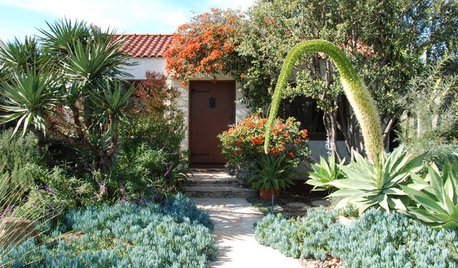
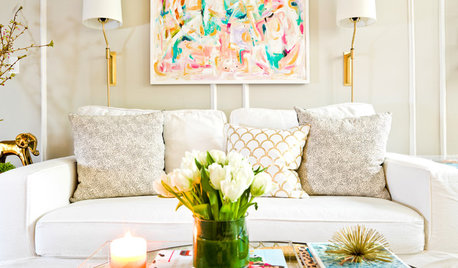
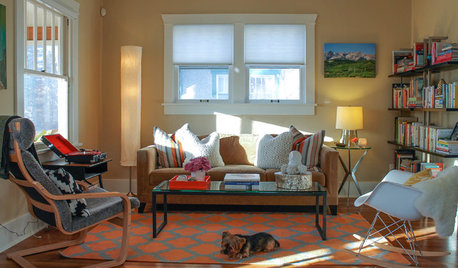
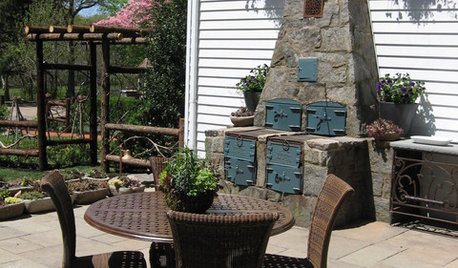
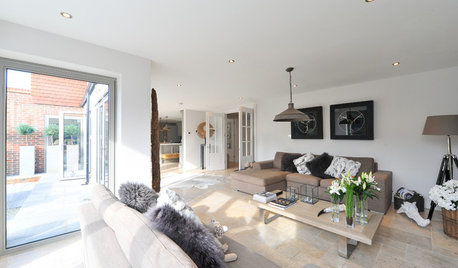
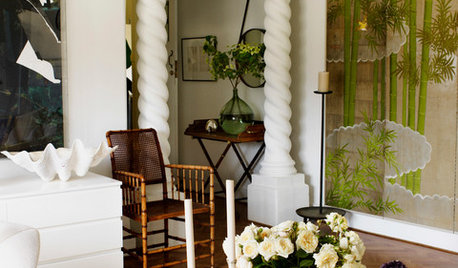
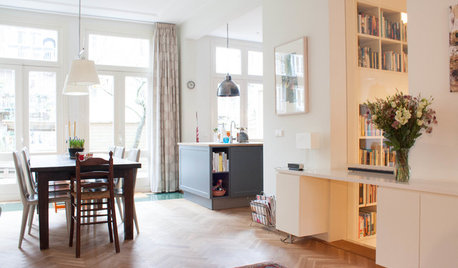
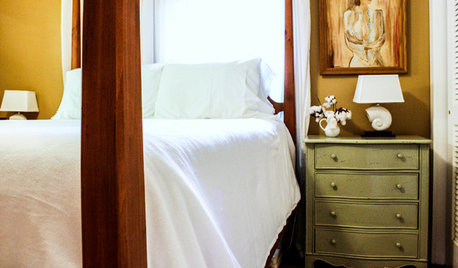
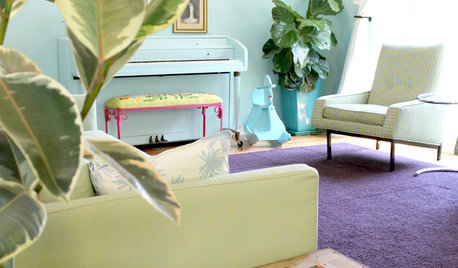







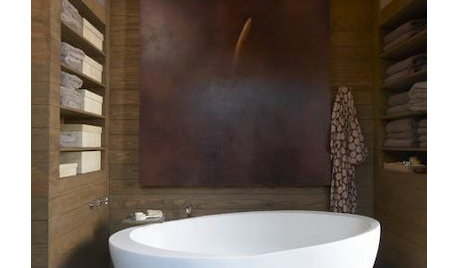
momcat2000